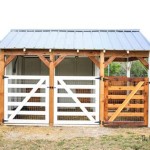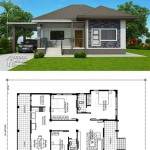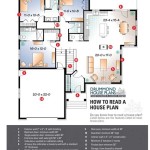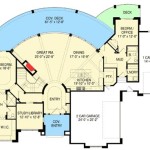Pole shed house plans are detailed blueprints for constructing a house using a pole shed as its foundation. A pole shed is a type of building commonly used for agricultural purposes, featuring vertical poles that support the roof and walls. Pole shed house plans utilize this structural system to create cost-effective, versatile, and durable homes.
For example, in rural areas where traditional building materials are scarce or expensive, pole shed house plans offer a practical solution. The use of poles as primary supports reduces lumber requirements, making the construction process more affordable. Additionally, the open interior layout of pole sheds allows for flexible floor plan design and easy customization to suit specific lifestyle needs.
In this article, we will delve into the specifics of pole shed house plans, exploring their advantages, considerations, and various design options available. By understanding the intricacies of these plans, homeowners can make informed decisions about whether a pole shed house is right for them and navigate the construction process with confidence.
Here are nine important points about pole shed house plans:
- Cost-effective
- Versatile
- Durable
- Open interior layout
- Flexible floor plan design
- Customizable
- Energy-efficient options available
- Can be built in a variety of locations
- May require additional insulation in cold climates
By considering these points, homeowners can make informed decisions about whether a pole shed house is right for them and navigate the construction process with confidence.
Cost-effective
Pole shed house plans offer cost savings compared to traditional stick-built homes due to several factors:
- Reduced lumber requirements: Pole sheds use vertical poles as the primary structural supports for the roof and walls, eliminating the need for load-bearing interior walls. This significantly reduces the amount of lumber required compared to traditional framing methods.
- Simplified construction process: Pole sheds are relatively easy to construct and often require less skilled labor than traditional homes. The open interior layout allows for efficient framing and installation of wiring, plumbing, and HVAC systems.
- Flexibility in design: Pole shed house plans can be easily modified to suit specific needs and preferences, reducing the need for costly custom designs. This flexibility allows homeowners to optimize the use of space and materials, resulting in cost savings.
- Lower maintenance costs: Pole sheds are typically constructed with durable materials such as metal siding and roofing, which require less maintenance compared to traditional exterior finishes. Additionally, the open interior layout allows for easy access to utilities and systems for maintenance and repairs.
Overall, the cost-effective nature of pole shed house plans makes them an attractive option for homeowners looking to build a durable, customizable home without breaking the bank.
Versatile
Pole shed house plans offer exceptional versatility, making them adaptable to a wide range of needs and preferences. Here are four key aspects that demonstrate their versatility:
Open Interior Layout
The open interior layout of pole sheds provides homeowners with unparalleled flexibility in designing their living space. The absence of load-bearing interior walls allows for the creation of large, open areas that can be easily divided into different rooms or zones. This open concept design promotes a sense of spaciousness and natural light, creating a comfortable and inviting living environment.
Customizable Design
Pole shed house plans can be easily customized to suit specific tastes and requirements. The flexibility of the structural system allows for modifications to the size, shape, and layout of the house. Homeowners can incorporate unique features such as lofts, mezzanines, or attached garages, tailoring the design to their lifestyle and preferences. Additionally, the open interior layout makes it easy to add or remove walls and partitions in the future, providing the ability to adapt the home to changing needs over time.
Multi-Purpose Use
Pole shed house plans are not limited to residential use. Their versatility extends to commercial and agricultural applications. The open interior space can be easily converted into workshops, studios, or storage facilities. The durable construction and energy efficiency of pole sheds make them suitable for various purposes, from housing livestock and equipment to operating small businesses.
Adaptable to Different Locations
Pole shed house plans are adaptable to a wide range of geographical locations. Their sturdy construction can withstand various weather conditions, making them suitable for both temperate and extreme climates. The open design allows for proper ventilation and airflow, reducing moisture buildup and ensuring a comfortable indoor environment. Additionally, the flexibility of the design allows for modifications to accommodate specific site conditions, such as sloped terrain or limited access.
In summary, the versatility of pole shed house plans lies in their open interior layout, customizable design, multi-purpose use, and adaptability to different locations. These factors make pole sheds an attractive option for homeowners seeking a durable, flexible, and cost-effective home that can meet their unique needs and preferences.
Durable
Pole shed house plans are renowned for their exceptional durability, ensuring that your home can withstand the test of time and various environmental challenges. Here are four key aspects that contribute to the durability of pole sheds:
Strong Structural System
Pole shed house plans utilize a structural system that provides superior strength and stability. The vertical poles, typically made of steel or laminated wood, are deeply embedded in the ground, creating a solid foundation that can resist high winds, earthquakes, and heavy snow loads. The poles are spaced strategically to distribute weight evenly and minimize stress on the structure. Additionally, the open interior layout eliminates the need for load-bearing interior walls, reducing the risk of structural damage during extreme events.
Durable Exterior Materials
Pole shed house plans often incorporate durable exterior materials that can withstand harsh weather conditions and protect the interior from moisture and pests. Metal siding and roofing are popular choices due to their longevity, resistance to rot and corrosion, and low maintenance requirements. These materials are designed to withstand extreme temperatures, UV rays, and heavy precipitation, ensuring the exterior of your home remains intact for many years to come.
Proper Ventilation
Proper ventilation is crucial for the durability of pole shed house plans. The open interior layout and high ceilings promote natural airflow, reducing moisture buildup and preventing the accumulation of harmful gases. Additionally, many pole shed house plans incorporate strategically placed windows and vents to facilitate cross-ventilation and maintain a comfortable indoor environment. Proper ventilation helps prevent mold, mildew, and rot, extending the lifespan of the structure.
Energy Efficiency
While durability is a primary concern, energy efficiency is also an important factor in the long-term performance of pole shed house plans. The open interior layout and high ceilings allow for efficient insulation, reducing heat loss during cold months and minimizing cooling costs during hot months. Proper insulation and air sealing measures can significantly reduce energy consumption, resulting in lower utility bills and a more sustainable home.
In summary, the durability of pole shed house plans is attributed to their strong structural system, durable exterior materials, proper ventilation, and energy efficiency. These factors ensure that your home will stand the test of time, providing a safe and comfortable living environment for many years to come.
Open interior layout
Pole shed house plans are characterized by their open interior layout, which offers a range of benefits and design possibilities. Here are four key aspects of the open interior layout:
Spacious and Airy
The open interior layout creates a sense of spaciousness and airiness, as there are no load-bearing interior walls to obstruct the flow of space. This allows for large, open areas that can be easily divided into different rooms or zones, providing a flexible and adaptable living environment. The high ceilings further enhance the feeling of spaciousness, creating a bright and inviting atmosphere.
Natural Light and Ventilation
The open interior layout promotes natural light and ventilation throughout the home. The absence of interior walls allows natural light to penetrate deep into the interior, reducing the need for artificial lighting during the day. Additionally, the high ceilings and strategically placed windows facilitate natural airflow, creating a comfortable and energy-efficient living environment. Proper ventilation helps prevent moisture buildup and ensures a healthy indoor air quality.
Flexible Floor Plan Design
The open interior layout provides homeowners with the flexibility to design their floor plan to suit their specific needs and preferences. Without the constraints of load-bearing walls, interior spaces can be easily reconfigured to accommodate changes in lifestyle or family size. This flexibility allows homeowners to customize their living environment, creating a home that truly reflects their unique style and requirements.
Cost-Effective Construction
The open interior layout can contribute to cost savings during construction. By eliminating the need for load-bearing interior walls, the amount of framing lumber required is significantly reduced. This can result in lower material costs and simplified construction, making pole shed house plans a more affordable option compared to traditional stick-built homes.
Overall, the open interior layout of pole shed house plans offers a range of benefits, including spaciousness, natural light and ventilation, flexible floor plan design, and cost-effective construction. These factors make pole sheds an attractive option for homeowners seeking a durable, customizable, and affordable home.
Flexible floor plan design
Adaptable to Changing Needs
The flexible floor plan design of pole shed house plans allows homeowners to adapt their living space to changing needs over time. The absence of load-bearing interior walls provides the freedom to reconfigure interior spaces easily, accommodating different stages of life and family dynamics. Whether it’s adding a bedroom for a growing family, creating a home office, or converting a large open area into smaller, more defined rooms, the open interior layout provides the flexibility to adapt the home to evolving requirements.
Customizable to Personal Preferences
Pole shed house plans offer a high level of customization, enabling homeowners to create a living space that truly reflects their personal preferences and style. The open interior layout provides a blank canvas upon which homeowners can design their ideal floor plan, incorporating features such as lofts, mezzanines, or attached garages. This customization extends to the placement of windows, doors, and interior walls, allowing homeowners to optimize natural light, create privacy, and define specific areas within the home.
Efficient Use of Space
The flexible floor plan design promotes efficient use of space, maximizing the potential of the open interior layout. Without the constraints of load-bearing walls, homeowners can create large, open areas that serve multiple functions. For example, a great room can combine the living room, dining room, and kitchen into one expansive space, creating a sense of spaciousness and togetherness. Additionally, the high ceilings allow for the incorporation of mezzanines or lofts, providing extra living space or storage without sacrificing the feeling of openness.
Cost-Effective Modifications
The flexibility of pole shed house plans extends to cost-effective modifications. The open interior layout reduces the need for extensive structural changes when making alterations to the floor plan. Modifying the placement of interior walls or adding new rooms can be done with relative ease, as there are no load-bearing walls to contend with. This flexibility not only allows for easy customization but also translates into cost savings compared to traditional stick-built homes, where structural modifications can be more complex and expensive.
In summary, the flexible floor plan design of pole shed house plans offers a range of benefits, including adaptability to changing needs, customization to personal preferences, efficient use of space, and cost-effective modifications. These factors make pole sheds an attractive option for homeowners seeking a durable, customizable, and affordable home that can grow and evolve with their lifestyle.
Customizable
Exterior Design Flexibility
Pole shed house plans offer a high degree of exterior design flexibility, allowing homeowners to create a home that complements their personal style and the surrounding environment. The exterior can be customized with a variety of materials, including metal siding, wood siding, or stone veneer. Homeowners can choose from a range of colors and finishes to create a unique look that reflects their taste. Additionally, the roof pitch and style can be disesuaikan to match the architectural style of the home and the local climate.
Interior Layout Versatility
The interior layout of pole shed house plans is highly versatile, providing homeowners with the freedom to create a living space that meets their specific needs and preferences. The open interior layout allows for the creation of large, open areas that can be easily divided into different rooms or zones. Homeowners can choose where to place interior walls, windows, and doors, allowing them to optimize natural light, create privacy, and define specific areas within the home.
Multi-Purpose Spaces
Pole shed house plans can incorporate multi-purpose spaces that serve multiple functions. The open interior layout provides the flexibility to create areas that can be used for different purposes at different times. For example, a great room can combine the living room, dining room, and kitchen into one expansive space, creating a sense of spaciousness and togetherness. Additionally, lofts or mezzanines can be added to create extra living space or storage without sacrificing the feeling of openness.
Adaptable to Changing Needs
The customizable nature of pole shed house plans allows homeowners to adapt their living space to changing needs over time. The open interior layout makes it easy to reconfigure interior spaces to accommodate different stages of life and family dynamics. Whether it’s adding a bedroom for a growing family, creating a home office, or converting a large open area into smaller, more defined rooms, the flexible design allows homeowners to modify their home to suit their evolving requirements.
In summary, the customizable nature of pole shed house plans offers a range of benefits, including exterior design flexibility, interior layout versatility, multi-purpose spaces, and adaptability to changing needs. These factors make pole sheds an attractive option for homeowners seeking a durable, customizable, and affordable home that can grow and evolve with their lifestyle.
Energy-efficient options available
Pole shed house plans can incorporate various energy-efficient features to reduce energy consumption and create a more sustainable home. These features not only benefit the environment but also result in lower utility bills for homeowners.
- Insulation: Proper insulation is crucial for energy efficiency in pole shed house plans. The open interior layout and high ceilings can lead to heat loss during cold months and heat gain during hot months. Adding insulation to the walls, roof, and foundation helps maintain a comfortable indoor temperature, reducing the need for heating and cooling systems.
- Windows and Doors: Energy-efficient windows and doors are essential for minimizing heat transfer. Look for windows and doors with high insulation values (low U-factors) and low air leakage ratings. Proper installation and sealing around windows and doors prevent drafts and air infiltration, further reducing energy loss.
- HVAC System: Choosing an energy-efficient HVAC (heating, ventilation, and air conditioning) system is important for maintaining a comfortable indoor environment while minimizing energy consumption. Consider high-efficiency heat pumps or geothermal systems that provide both heating and cooling while consuming less energy compared to traditional systems.
- Renewable Energy Sources: Pole shed house plans can be integrated with renewable energy sources such as solar panels or geothermal energy to reduce reliance on fossil fuels. Solar panels can generate electricity, while geothermal energy can be used for heating and cooling, significantly reducing energy costs and the environmental impact of the home.
By incorporating these energy-efficient features into pole shed house plans, homeowners can create a comfortable and sustainable living environment while saving money on utility bills and reducing their carbon footprint.
Can be built in a variety of locations
Pole shed house plans offer versatility in terms of location, making them suitable for a wide range of landscapes and climates. Their adaptability stems from the inherent strength and durability of the pole shed structure.
- Rural Areas: Pole shed house plans are particularly well-suited for rural areas where land is more affordable and space is not a constraint. The open interior layout and customizable design allow homeowners to create spacious and comfortable homes that meet their specific needs.
- Suburban Areas: Pole shed house plans can also be adapted to suburban areas, where lot sizes may be smaller. The flexibility of the design allows for efficient use of space, creating homes that fit comfortably on smaller lots while still providing ample living space.
- Sloping Sites: The pole shed structural system can be adapted to accommodate sloping sites. The vertical poles provide a solid foundation, allowing the house to be built on uneven terrain without compromising stability.
- Coastal Areas: With proper design considerations and materials selection, pole shed house plans can be built in coastal areas. The use of corrosion-resistant materials and proper ventilation helps protect the structure from the effects of salt air and moisture.
The adaptability of pole shed house plans to various locations makes them an attractive option for homeowners seeking a durable, customizable, and affordable home that can be built on a variety of sites.
May require additional insulation in cold climates
Pole shed house plans are generally well-suited for various climates, but they may require additional insulation in cold climates to maintain a comfortable indoor temperature and minimize energy consumption.
- Heat Loss through Large Open Spaces: The open interior layout and high ceilings characteristic of pole shed house plans can lead to heat loss, especially in cold climates. Proper insulation in the walls, roof, and foundation is crucial to prevent heat from escaping, reducing the need for excessive heating and lowering energy bills.
- Minimizing Drafts and Air Infiltration: Gaps and cracks around windows, doors, and other openings can allow cold air to enter the home, leading to discomfort and increased energy consumption. Proper insulation and sealing around these areas is essential to minimize drafts and air infiltration, maintaining a warm and draft-free indoor environment.
- Energy Efficiency Standards: Building codes in cold climates often have specific energy efficiency requirements for new homes. These codes may mandate certain levels of insulation in walls, roofs, and foundations to ensure that homes meet minimum energy performance standards. Adhering to these requirements helps homeowners achieve a more energy-efficient home that is better equipped to withstand cold temperatures.
- Personal Comfort and Health: Adequate insulation contributes to a comfortable and healthy living environment. Proper insulation helps regulate indoor temperature, preventing cold drafts and maintaining a consistent warmth throughout the home. This is particularly important in cold climates, where maintaining a comfortable indoor temperature is crucial for well-being and preventing health issues related to cold exposure.
By incorporating additional insulation into pole shed house plans in cold climates, homeowners can create a warm, energy-efficient, and comfortable living space that meets their specific needs and preferences.










Related Posts








